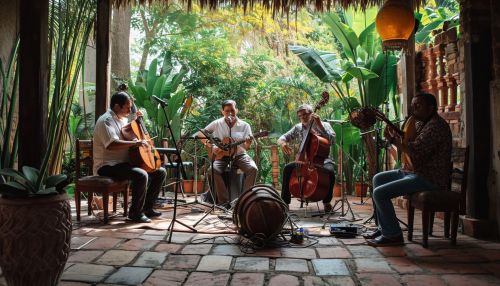Cumbia Villera
Origins and History
Cumbia Villera is a subgenre of Cumbia music that originated in the slums (villas) of Buenos Aires, Argentina, in the late 1990s. It is a musical style that is deeply rooted in the socioeconomic and political context of the time, reflecting the harsh realities of life in the villas.


The origins of Cumbia Villera are closely tied to the economic crisis that hit Argentina in the late 1990s and early 2000s. The crisis led to widespread unemployment, poverty, and social unrest, conditions that were particularly acute in the villas. This environment gave birth to a new form of music that spoke directly to these experiences.
The first Cumbia Villera bands, such as Pibes Chorros and Yerba Brava, emerged out of this context. Their lyrics were explicit and raw, dealing with themes such as poverty, crime, drugs, and life in the villas. The music was a fusion of traditional Cumbia rhythms with elements of Reggae and Rock, creating a distinctive sound that quickly gained popularity.
Musical Characteristics
Cumbia Villera is characterized by its heavy use of electronic instruments, particularly keyboards and synthesizers, which give the music its distinctive sound. The rhythm is typically fast-paced, with a strong emphasis on the offbeat, similar to Reggae. The lyrics are often explicit and deal with themes related to life in the villas, such as poverty, violence, and drug use.
The music is often accompanied by a distinctive style of dance, which involves a lot of hip movement and footwork. The dance is often performed in a circle, with dancers taking turns to enter the center and show off their moves.
Cultural Impact and Controversy
Cumbia Villera has had a significant cultural impact in Argentina and beyond. It has been embraced by many in the villas as a form of expression and a way of highlighting the issues they face. However, it has also been criticized for its explicit lyrics and for allegedly glorifying crime and drug use.
Despite the controversy, Cumbia Villera has continued to evolve and remains a popular genre in Argentina. It has also spread to other countries in Latin America and has influenced other musical styles.
